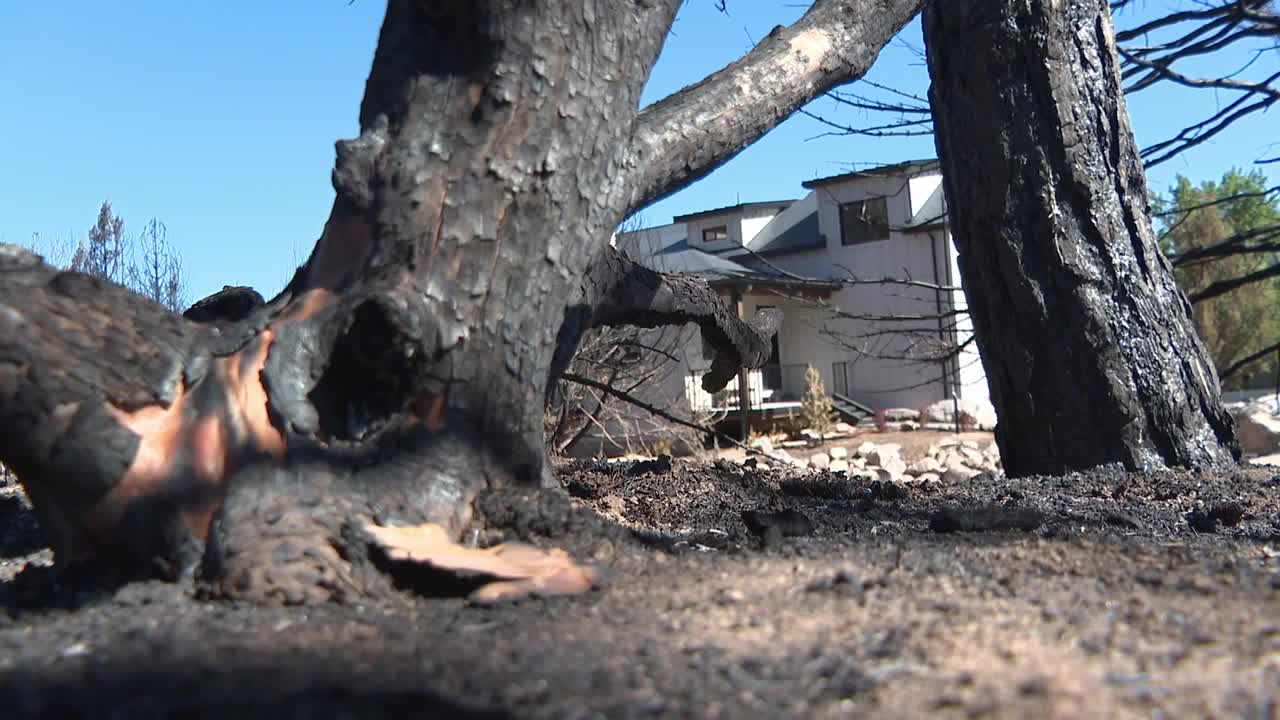PINE VALLEY, Utah — A single home stands untouched amid the devastation of one of southern Utah's most destructive wildfires in more than a decade, offering valuable lessons in fire-resistant construction.
The Forsyth Fire destroyed 13 homes in Pine Valley, but Keith Kelsch's newly built house survived flames that firefighters said reached five times the height of the structure.
"Somebody says, 'Oh, if you're blessed, then you make other people feel bad' because their home burnt down and they weren't blessed," Kelsch said. "But luck is the product of what we do to increase a better chance at what we do. It's like you have a test on Friday and you study for it. It increases your luck."
Kelsch, a general contractor who also teaches through his howtobuildyourownhome.com website, attributes his home's survival to specific construction choices that cost thousands more than standard building methods. But it doesn’t mean billions of things had to be different about the home.
"It's not a billion. Just three things," he explained. "It's your roof, your soffit and fascia, and your siding material."
'Hot rods' take to the skies to fight Utah's biggest wildfires:
For those unfamiliar with construction terminology, the soffit is the exposed underhang of a roof, which Kelsch identifies as a critical vulnerability during wildfires.
"That's probably your weakest link in a high-wind fire like this. Two of these homes I know caught fire through embers that were sucked up into the attic," Kelsch said.
His home features a soffit and roof sealed in three layers, vertical and thicker 8x8 exposed wood beams, and non-combustible fiber cement siding. The base of the house includes an inch-and-a-half of cement backed by an inch and a half of mineral wool.
"If you know anything about mineral wool, it's fireproof, moldproof, you can stick a torch on it and it's not gonna get consumed at all," Kelsch shared.
Pine Valley residents rise from the ashes, focus on future after devastating Forsyth Fire:
Malissa Kelsch, Keith's wife, supports his commitment to quality construction despite the higher costs.
"He's always thinking, trying to make things better," she said. "And I appreciate that. And sometimes, yes, I think, 'Oh, how much is that going to cost?' Of course."
The investment paid off when the wildfire hit. "One firefighter told us that there were 100-foot flames hitting our home. And we're like, wow," Malissa said.
Firefighters quickly determined the Kelsch home would survive, allowing them to focus on protecting other structures.
Kelsch, who serves on Washington County's Planning Commission, isn't advocating for more local regulations. Instead, he's proposed to the governor that a private sector wildland engineer should approve methods for constructing woodland homes, similar to how geologists are currently required.
"When any builder builds a home, even an owner builder builds a home, they have to go through some protocols," he said.
Kelsch's philosophy on construction emphasizes long-term thinking
"I don't ever want to touch something when I put it on a home in my lifetime or my children's lifetime. It's just the way I am. I'd like to have it be up there and stick there with almost zero maintenance and a lot of efficiency and a lot of protection over a long period of time."




